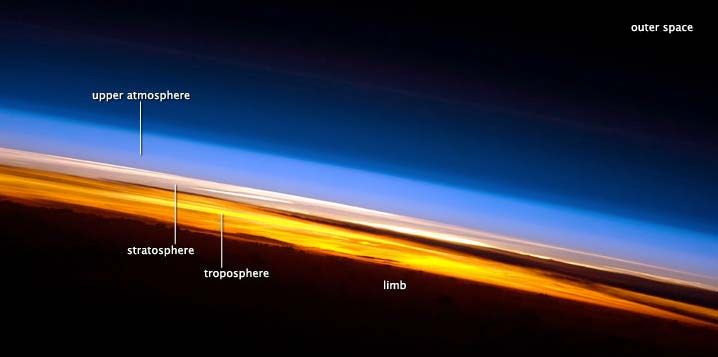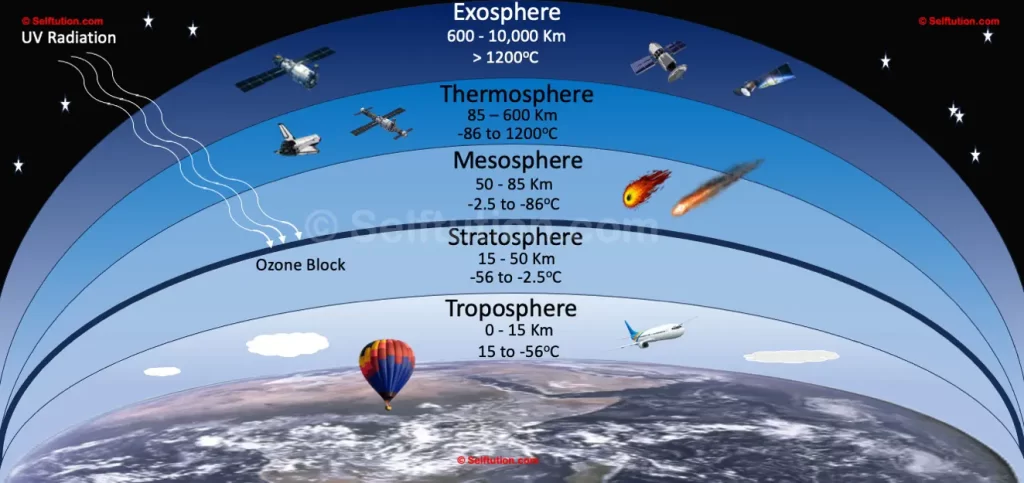Layers of the Earth’s Atmosphere
The Earth’s atmosphere is a complex, multi-layered envelope of gases that surrounds the planet, playing a vital role in sustaining life. It protects the Earth from harmful solar radiation, helps regulate temperature, and supports weather systems. The atmosphere is divided into five main layers based on temperature changes with altitude. These layers are the Troposphere, Stratosphere, Mesosphere, Thermosphere, and Exosphere.

1. Troposphere
- Altitude: 0 to ~12 km (0 to 7.5 miles)
- Key Features:
- Closest layer to Earth’s surface.
- Contains approximately 75% of the atmosphere’s mass.
- Weather occurs here (clouds, rain, storms).
- Temperature decreases with altitude.
2. Stratosphere
- Altitude: ~12 to 50 km (7.5 to 31 miles)
- Key Features:
- Contains the ozone layer, which absorbs harmful UV rays.
- Commercial jets often fly in this layer.
- Temperature increases with altitude due to ozone absorption of sunlight.
3. Mesosphere
- Altitude: ~50 to 85 km (31 to 53 miles)
- Key Features:
- Meteors burn up here, creating shooting stars.
- Coldest atmospheric layer, reaching -90°C (-130°F).
- Air is too thin for breathable oxygen.
4. Thermosphere
- Altitude: ~85 to 600 km (53 to 373 miles)
- Key Features:
- Temperature rises significantly, up to 2,000°C (3,600°F).
- Hosts auroras (Northern and Southern Lights).
- The International Space Station orbits within this layer.
- Despite high temperatures, it would feel cold due to low particle density.
5. Exosphere
- Altitude: ~600 to 10,000 km (373 to 6,200 miles)
- Key Features:
- Outermost layer, blending into outer space.
- Composed mostly of hydrogen and helium.
- Very few particles; almost a vacuum.
- Some satellites orbit here.

🧠 Conclusion
The Earth’s atmosphere is a finely layered system that plays a vital role in protecting life and supporting global systems. From the life-sustaining troposphere to the space-blending exosphere, each layer has unique functions and characteristics. Understanding these layers helps scientists monitor climate change, improve air travel, and develop space exploration. As we continue to explore beyond Earth, the importance of protecting our atmosphere becomes even more critical for the future of life on our planet.